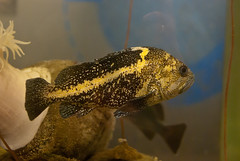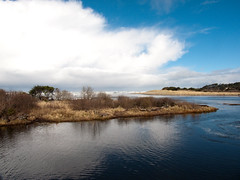 NEWPORT – The Research Vessel Wecoma, which has been serving Oregon State University marine scientists for more than 35 years, is being retired from service and replaced with a somewhat smaller ship from the University National Oceanographic Laboratory System fleet.
NEWPORT – The Research Vessel Wecoma, which has been serving Oregon State University marine scientists for more than 35 years, is being retired from service and replaced with a somewhat smaller ship from the University National Oceanographic Laboratory System fleet.
The 184-foot Wecoma made her last cruise in November; her replacement, the Oceanus, is expected to dock in Newport in February, after making the long voyage from her former port at the Woods Hole National Oceanographic Institute on the East Coast, down through the Panama Canal and up the Pacific Coast to Oregon. A retirement celebration for the Wecoma will be held at the Hatfield Marine Science Center in Newport in March.
Both vessels are owned by the National Science Foundation, and operated by the University National Oceanographic Laboratory System, a consortium of 60 academic research institutions that operate 16 vessels around the country.
Mark Abbott, dean of the College of Earth, Ocean, and Atmospheric Sciences at OSU, had approached the National Science Foundation for a rapid analysis of the two ships to see which one would be more cost-effective to operate over the next several years. A team of technicians returned the verdict – a strong recommendation for the 177-foot Oceanus – after discovering some problems with corrosion and other issues with the Wecoma.
 “There are a few differences in science capabilities,” Abbott said, “but Oceanus is very capable and will be more cost-effective to operate over the next five to 10 years, at which point we hope to have a new ship.’
“There are a few differences in science capabilities,” Abbott said, “but Oceanus is very capable and will be more cost-effective to operate over the next five to 10 years, at which point we hope to have a new ship.’
Read the full story from OSU News & Research Information




